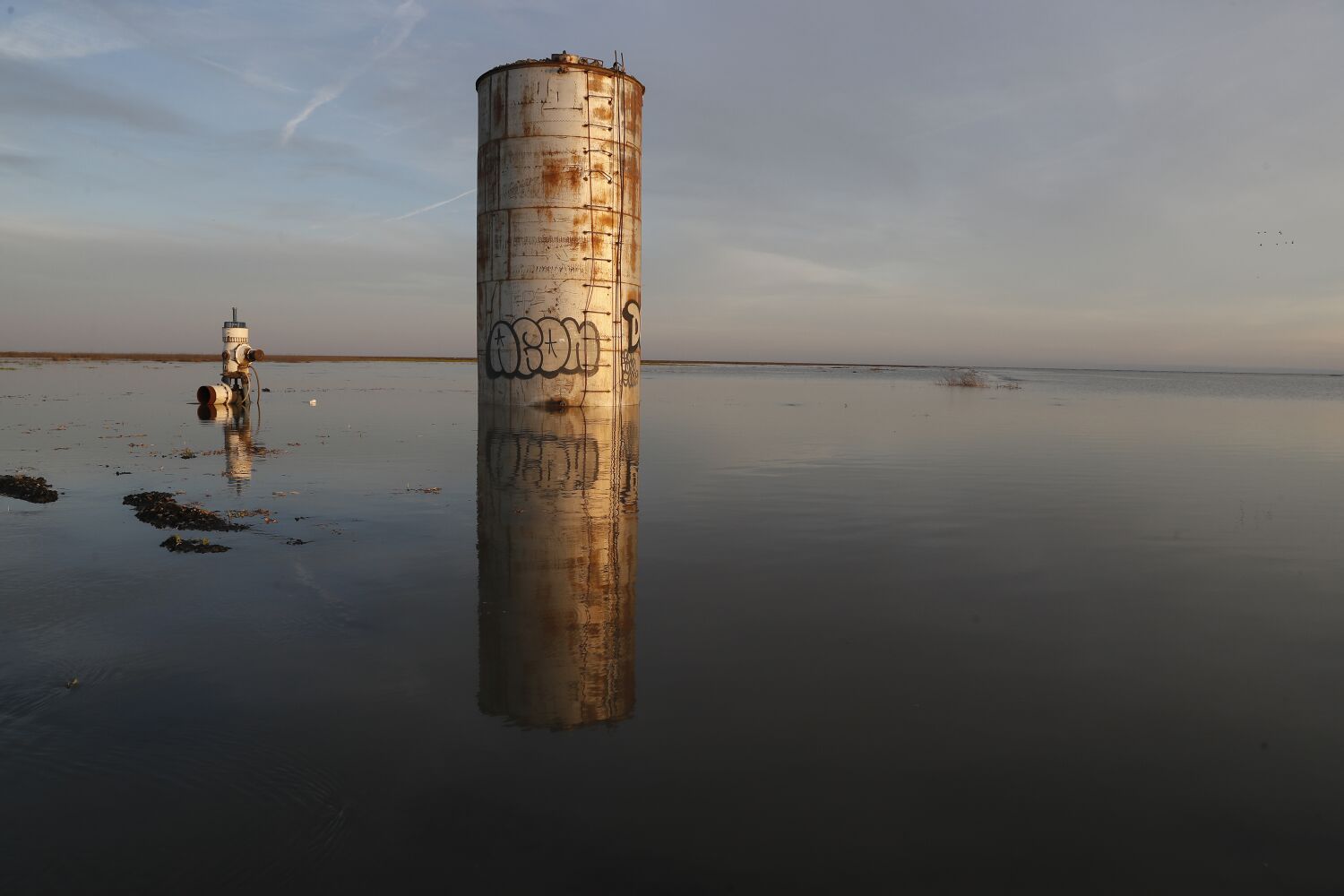Global Courant 2023-05-26 15:00:03
The slow-motion rebirth of Lake Tulare has flooded farmlands and threatened levees, homes and entire cities. On Monday, the state predicted the lake would peak in the next week or so, but the floodwaters may linger for two years.
The return of what was once the largest lake west of the Mississippi has caught our attention as one of the most dramatic climatic events of 2023. Yet the flooded crops and tenuous levees at Tulare Lake now represent only a fraction of the nationwide and national landscape. subject to greater flooding in the era of global warming.
Seven percent of America is flood-prone and will face the risks and challenges of escalating flooding in the future. For every 1 degree Fahrenheit increase in temperature, the atmosphere holds 4% more water – every drop will return to earth someday. And the consequences are serious. In 2022, data from the National Oceanic and Atmospheric Administration showed heavy rainfall already supply 30% more water than that of the 1960s. The National Center for Atmospheric Research warns that the number extreme rainfall could increase by 400% by 2100delivering 70% more water to many places.
The inability to effectively address this reality is an important part of the backstory of Tulare Lake’s re-emergence. The country’s dams and levees, built at a cost of mega-billions, are aging. The system will not contain the largest, most dangerous floods we can foresee.
Look no further than the close call at Oroville Dam in 2017, when inadequate drainage channels and a near-overflowing reservoir forced the temporary evacuation of nearly 190,000 Residents. Just weeks ago, levees along Monterey County’s Pajaro River turned to mud, flooding homes and businesses in communities least able to afford it.
While the 93% of the U.S. landscape that does not flood is certainly not all fit for development, much of it is more suitable for settlement than the lowlands where we are constantly reenacting a tired and doomed exercise. Flood, suffer, recover. Here’s how bad it can get: In Houston, a house with an initial value of $114,000 was the subject of 16 federal flood insurance claims in six years, and its owners collected $806,000 to rebuild over and over again. Our operative approach to flooding can best be summed up in one word: denial.
Meanwhile, the cheapest, least painful way to avoid flood damage is just to build on higher ground and move away from the hazards. In Nashville; Charlotte, NC, and Tulsa, Oklahoma, city and county governments have successfully enacted effective floodplain zoning, relocated homes, and converted waterfronts into public open space. In California, Napa’s Flood Protection Programwhich started in the late 1990s is a good example of this.
Yet the places where we have begun to reclaim floodplains for rivers vastly outnumber the problem areas that remain and continue to be created. It’s like trying to mop up the floor of an overflowing bathtub without turning off the faucet first. Consider this data point: the Natural Resources Defense Council calculated that for every $100 the Federal Emergency Management Agency spends helping people rebuild where floods return, it spends only $1.72 helping people move out of reach of high water.
Relocating development away from floodplains should be funded, at least insofar as we spend money on maintaining dams, rebuilding failed levees, investing in dubious attempts to “flood-proof” buildings, and paying for relief when people get predictably drenched .
Of course, entire flood-prone cities, such as Sacramento and Stockton, will not be moved. But 90% of the country’s flood plains are not part of densely populated urban areas. We know almost exactly where the floods of the future will occur. It’s not too late to prevent more building, or too expensive to move many of the homes and businesses that are at risk. Government programs encourage these approaches, but investments must be robust enough to compete with compensatory incentives.
The “phantom lake” that refilled the Tulare Basin this winter keeps us entranced. It should also remind us of what’s at stake in California and the country for decades to come, and what needs to change if we are to adapt instead of suffering and paying for the costs of flooding over and over again. It only makes sense to avoid serious losses that we know are inevitable.
Tim Palmer is the author of more than 30 books on rivers, conservation and the environment. His latest, Seek Higher Ground: The Natural Solution to Our Urgent Flooding Crisis, will be released in 2024.








